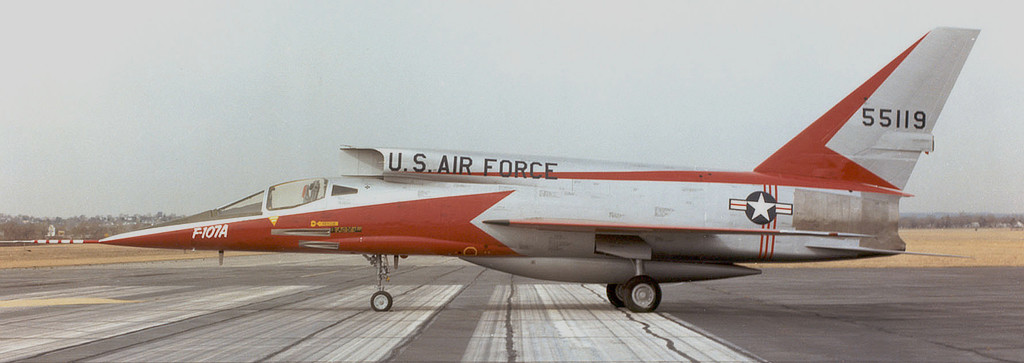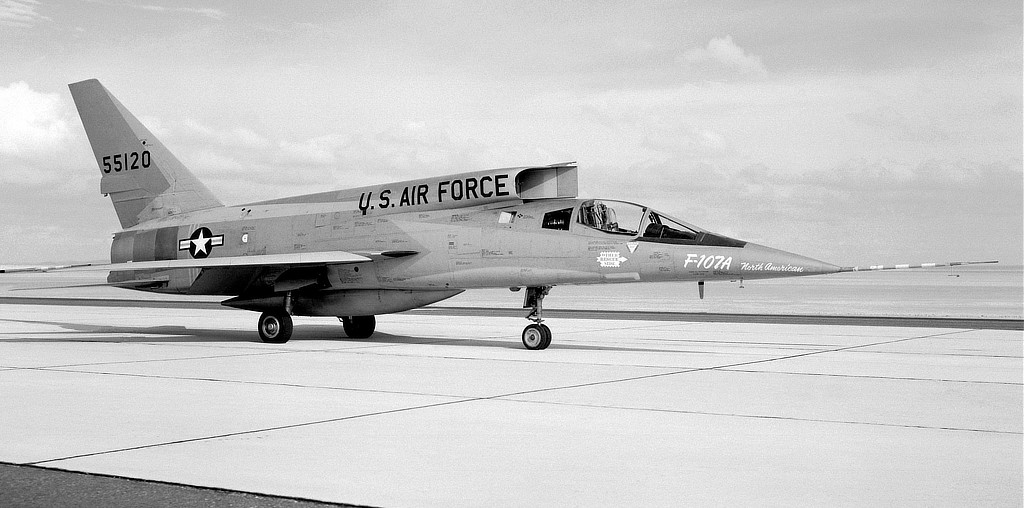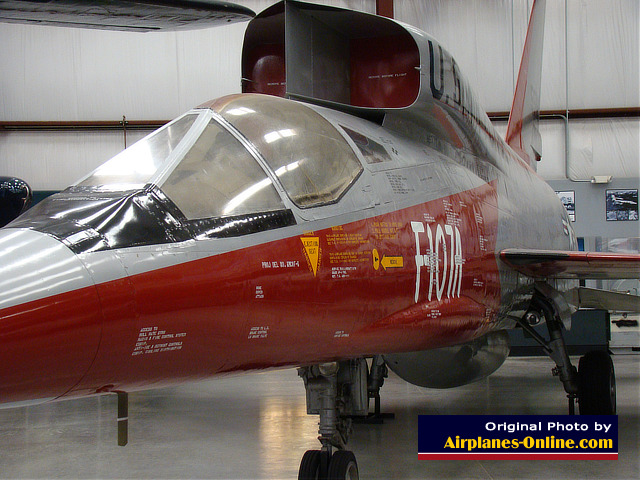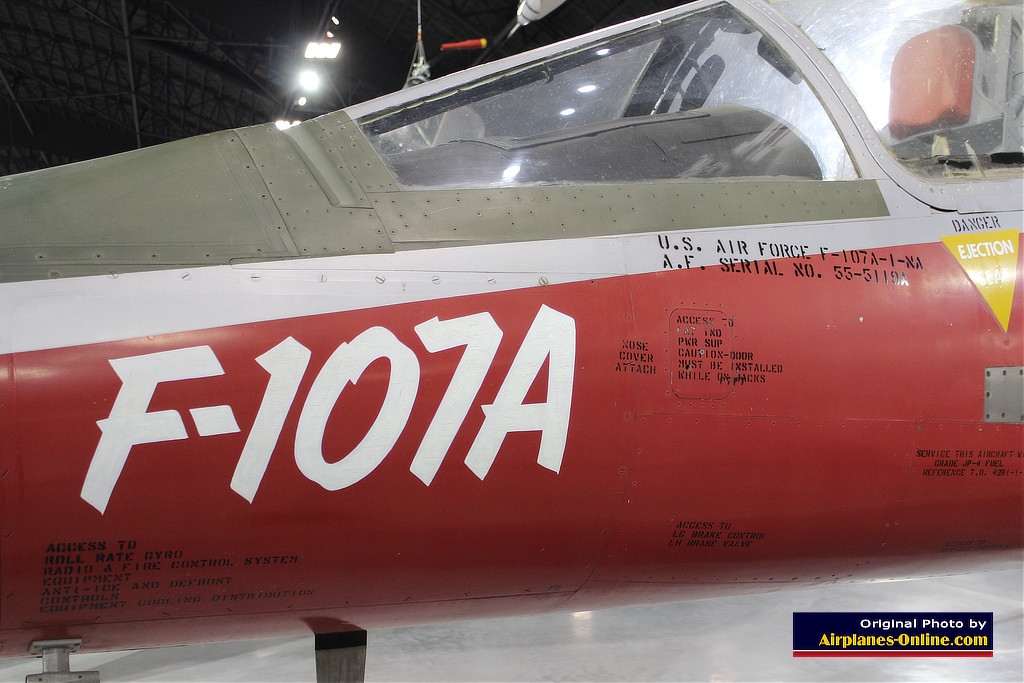F-107A Ultra Sabre Fighter
Background and Development of the F-107
The North American Aviation F-107 (NA 212) was based on the F-100 Super Sabre, and included many innovations and radical design features such as the over-fuselage air intakes. Never officially named by the Air Force, it has been known as the "Super Super Sabre" and the "Ultra Sabre".
The Air Force initially gave the approval for 33 aircraft, at the time designated "F-100B" models in June of 1954. The designation was later changed to F-107A to reflect changes from the Super Sabre design, including a longer fuselage, an all-moving vertical fin, an automated flight control system, and other differences and refinements. The initial contract with North American was later modified by the USAF for only 9 aircraft, although only 3 prototypes would ultimately be built.
The USAF requirement to carry a nuclear bomb was accommodated partly within a recess in the aircraft’s underside, which necessitated the decision to reroute the air intake above it. Because of the unusual location of the air intake, it was necessary for the canopy to open straight up rather than in clamshell fashion.
The maiden flight was on September 10, 1956, and it was deemed a success, reaching a speed of Mach 1.03. A few months later, an F-107 flew at Mach 2 (twice the speed of sound).
The F-107 was considerably larger and heavier than the F-100, but it was powered by the new Pratt & Whitney J75 turbojet delivering 24,500 pounds of thrust, 50% more thrust than the Super Sabre.
The competition for this generation of aircraft was eventually won by the Republic F-105 Thunderchief, with the Air Force terminating the F-107 contract with North American Aviation in March of 1957. The prototypes continued their life as test aircraft for NASA at the Flight Research Center until 1959. The XF-107 prototypes ended their service as test aircraft and museum planes.
Side view of the second-built F-107A - Serial Number 55-5119 (Photo courtesy of the Museum of the United States Air Force) |
 |
The third-built U.S. Air Force F-107A - Serial Number 55-5120 (Photo courtesy of the NASA Flight Research Center) |
 |
F-107 Survivors
Only three F-107 Ultra Sabre prototypes were built. The first one built (S/N 55-5118) is on display at the Pima Air & Space Museum in Tucson, and the second (S/N 55-5119) at the National Museum of the U.S. Air Force at Wright-Patterson AFB in Dayton, Ohio (see photos below). A third F-107 (S/N 55-5120) crashed during testing and was scrapped.
F-107A at the Pima Air & Space Museum (Staff Photo) |
F-107A at the Museum of the U.S. Air Force (Staff Photo) |
F-107 Specifications
Engine: Pratt & Whitney J75 of 23,500 lbs. thrust with afterburner
Armament: Four 20mm cannons, 108 2.75-inch rockets and up to 4,000 pounds of bombs
Maximum speed: Mach 2+
Range: 1,570 miles
Service ceiling: 48,000 feet
Weight: 41,537 lbs. maximum
Close-Up Views of the F-107
Close-up view of the first F-107A, Serial Number 55-5118, at the Pima Air & Space Museum in Tucson, Arizona (Staff Photo) |
 |
Close-up view of the second F-107A, Serial Number 55-5119, at the Museum of the United States Air Force (Staff Photo) |
 |

